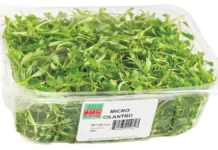Picture this: your restaurant is underwater — literally. And so is every other business in your entire area, after an unprecedented flood. If there was ever a time to consider what you should do in the event of a devastating natural disaster, this is it. In the case of a catastrophic event, massive mechanical failure or key leadership loss, you would be under intense pressure to have your operations up and running again — rather than thinking about what you should have done.

So how do you prepare for an event that may or may not happen? The best thing you can do to maintain your peace of mind is develop a plan for your restaurant(s) to remain operational through a worst-case scenario. Begin by properly valuing your business so that you can make an informed decision as to the amount of coverage you need to protect your income following a catastrophic event.
To help you get started with the valuation process, answer the following nine questions:
DOCUMENT YOUR ORGANIZATION’S FINANCIAL VALUE
1. Is your financial information complete, accurate and up to date, so you can prove the value of your operations? Your Business Interruption (BI) value is calculated using revenue from the most recently completed 12-month financial period. Most BI value worksheets use a deductive approach, taking annual net sales plus other earnings from business operations minus certain non-continuing expenses. If your business is in a period of rapid change, you should update your BI values more than once per year.
2. Will your organization change over the next 12 months, and have you taken this into account when assessing your organization’s value? A critical factor in establishing adequate BI values is a realistic assessment of how revenues and expenses will change over the coming year. If your budget hasn’t been updated in several months, valuations may already be out of date. Make sure to include any important changes, such as proposed acquisitions or the likelihood of closing large deals still in the pipeline.
3. Have expenses been properly identified and incorporated in the calculated BI value? BI covers net profits and continuing expenses. These may include:
- Rent
- Utilities
- Payroll for key employees such as your general managers, chefs and book keepers.
IDENTIFY RECOVERY TIME INFLUENCERS
4. What factors could influence the time it would take for your restaurant to recover after a major event such as a large fire? There are no standard rules for determining the length of time it takes to recover. This time period is a key factor when determining the right amount of BI coverage. Your goal is to consider multiple scenarios and assess all known factors to ensure you have the right amount of coverage.
You should keep in mind that in the event of a large natural catastrophe such as an earthquake or hurricane, limitations on such necessities as labor, materials and infrastructure services can slow the recovery process. These limitations can also result in increased services and materials costs. Zoning changes since your original site was constructed could slow or derail plans to rebuild.
5. Do you have a business continuity plan in place? Any company with a well-conceived business continuity plan (BCP) in place will most likely recover more quickly from a loss and be viewed as a better insurance risk. A BCP gives you a roadmap to recovery following a shutdown. This plan helps you identify and control added expenses, provides a realistic view of downtime, and offers a faster timeframe to return to normal, as well as an assessment of risks, threats and recovery requirements specific to your operation.
How the plan is communicated and applied is just as important as the plan itself. Distributing the plan and testing it with key personnel ahead of an event can minimize disruption. Having copies stored at an offsite location should also be part of the planning process.
ACCOUNT FOR MARKET CHANGES AND NETWORK DISRUPTION
6. What external market factors could influence your BI value? It’s important to consider external factors such as economic changes, the competitive landscape, circumstances that could impact suppliers or customers, and regulatory developments.
7. Do you have a plan to address network security and the costs of a data breach or network disruption? BI insurance complements your Business Owner Package (BOP) or property policy. However, when assessing your BI value, you also should take the opportunity to review your Cyber Risk coverage. A Cyber Risk policy will cover network BI and reimburse income lost and expenses incurred if your network falls prey to a cyber-attack. Since cyber-attacks can take time to recover from, especially in the case of a ransomware event, you should create a network interruption plan with the assistance of a cyber security specialist.
UNDERSTAND THE IMPACT OF KEY SUPPLIERS, CUSTOMERS AND LEADERSHIP
8. Do you depend on a few suppliers for your revenue? Companies relying on a few key suppliers could be in serious trouble if one or more of those suppliers were forced out of business by a BI event. Similarly, the loss of a key customer could be disastrous. Companies with vulnerabilities to key suppliers or customers should consider contingent BI coverage and account for the value of that customer or supplier and its potential impact on the balance sheet.
9. If your business is led by a small team or a few pivotal employees, have you considered disability or key person insurance for them? Income loss can result from the death of or, more commonly, from the loss of access to, or disability of, a key hire. If your operations are managed and led by a small group of employees who directly impact revenues, you should include a review of disability considerations for them when valuing your business.
Work with an insurance advisor familiar with the restaurant industry to help you establish a business continuity plan and ensure that you are properly protected and able to bounce back in the event your operations come to an unexpected halt.























